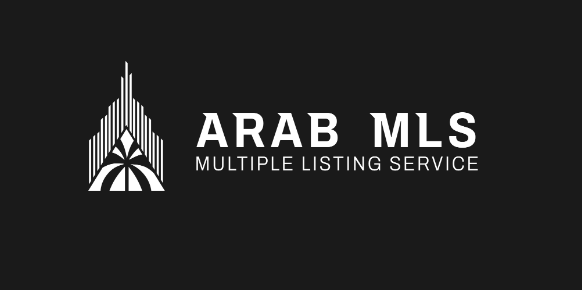For decades, real estate professionals have grappled with the challenge of accurately pricing homes listed on Multiple Listing Services (MLS). Determining the right price is critical—too high, and properties languish unsold; too low, and sellers leave money on the table. Traditionally, pricing relied on comparative market analysis (CMA), where agents examined recent sales of similar homes, market conditions, and subjective judgment. While CMAs remain useful, the rise of big data and machine learning offers a transformative way to approach home valuation.
Machine learning models, powered by vast MLS datasets and sophisticated algorithms, enable data-driven pricing that can incorporate a multitude of variables, detect patterns invisible to humans, and adapt to market changes in real time. This article explores how machine learning is revolutionizing MLS home pricing, the types of models involved, their advantages and limitations, and the implications for real estate professionals and consumers.
The Traditional Pricing Paradigm and Its Constraints
The conventional approach to pricing homes involves the CMA, drawing parallels between a subject property and comparable recently sold homes in the same neighborhood. Agents account for differences in property size, age, features, and market dynamics to estimate value. Although grounded in experience, this methodology can be imprecise due to human bias, limited datasets, and rapidly shifting market forces.
The real estate market is highly localized and influenced by countless features, from proximity to schools to neighborhood desirability, and even aesthetic appeal. Human analysts may struggle to factor in subtle but impactful elements, especially when overwhelmed by large volumes of data. Moreover, subjective factors like seller motivation or market sentiment introduce inconsistencies in pricing.
As technology advances, reliance solely on traditional methods can disadvantage agents and their clients by failing to fully exploit the wealth of data available through MLS and other sources.

How Machine Learning Enhances MLS Home Pricing
Machine learning (ML), a subset of artificial intelligence, empowers computers to learn from data and identify complex relationships without explicit programming. In the context of MLS home pricing, ML algorithms ingest an array of structured and unstructured data—listing characteristics, transaction histories, neighborhood metrics, economic indicators, and more—to generate predictive models.
Unlike linear formulas or simple rule-based heuristics, ML models capture nonlinear interactions and adjust predictions based on new data, delivering dynamic and nuanced pricing estimates. They improve over time by re-training on fresh MLS data, accounting for shifts in buyer preferences, market cycles, and regional variations.
Implementing machine learning for home pricing harnesses patterns within millions of data points that human agents might overlook, improving accuracy while reducing bias and manual effort.
Types of Machine Learning Models Used in Home Valuation
Several machine learning techniques demonstrate efficacy in real estate pricing, each offering distinct strengths.
Regression-based models such as linear regression extended with regularization methods like Lasso or Ridge regression serve as foundational tools, providing interpretable relationships between features and home prices while preventing overfitting.
Tree-based models—such as decision trees, Random Forests, and Gradient Boosting Machines (GBMs)—excel at handling heterogeneous data and capturing intricate feature interactions. Their ensemble approaches aggregate multiple decision trees to minimize prediction errors and enhance robustness.
Neural networks, inspired by the human brain, process complex and high-dimensional datasets, learning hierarchical feature representations. Deep learning architectures can incorporate image analysis of property photos, recognizing elements impacting desirability that textual data alone cannot convey.
Support Vector Machines (SVMs) and k-Nearest Neighbors (k-NN) also find applications, often complementing ensemble methods or serving specific tasks within broader pricing frameworks.
Advanced pipelines frequently combine multiple algorithms and data sources, allowing blended or stacked models that synthesize predictions for optimal performance.
Data Inputs Shaping Machine Learning Pricing Models
The predictive power of ML depends heavily on the quality and diversity of data fed into models. MLS databases provide a wealth of core information: listing details (number of bedrooms, bathrooms, square footage), sale prices, listing dates, and property descriptions.
Augmenting MLS data with external datasets heightens model sophistication. Public records add ownership history and tax assessments. Demographic statistics reveal neighborhood characteristics such as population density, income levels, and school quality. Economic indicators, including employment rates and mortgage rates, influence buying power and demand.
Geospatial data delivers insights about proximity to amenities, transportation hubs, and environmental factors. Satellite imagery and street-view data, analyzed through computer vision, unveil curb appeal and property conditions.
Natural language processing enables the extraction of sentiment or relevant features from agent remarks and online property reviews.
Meticulously feature-engineered datasets, combined with ongoing data cleaning and validation, form the backbone of reliable and scalable pricing models.
Advantages of Machine Learning-Based Pricing
Machine learning models offer several key benefits over traditional pricing techniques. Their granular analysis supports more precise valuations, ultimately reducing “time on market” for sellers and mitigating overpricing risks.
Automation accelerates the pricing workflow, freeing agents to focus on client relationship management and negotiation rather than data crunching. This scalability makes ML suitable for large brokerage firms handling thousands of listings.
By systematically reducing human bias, ML models help standardize pricing decisions and promote market transparency. Furthermore, continuous learning mechanisms ensure models stay current amid rapid market fluctuations, enhancing adaptability during events like economic downturns or housing booms.
Customizable models accommodate unique client needs such as investment property pricing, renovation impact estimation, or luxury home valuation, offering tailored insights.
Limitations and Considerations
Despite promising outcomes, machine learning in MLS home pricing is not without challenges. Data quality issues—missing, incorrect, or outdated entries—can impair model accuracy. MLS systems differ regionally, potentially requiring localized models to capture area-specific nuances adequately.
Machine learning algorithms can lack interpretability, making it difficult for agents or clients to understand the rationale behind price estimates. This opacity may undermine trust, requiring thoughtful explanation tools and transparent model design.
External factors such as market sentiment, sudden regulatory changes, or natural disasters are difficult to quantify or predict solely through historical data, calling for cautious interpretation of model outcomes.
Finally, reliance on technology should complement, not replace, skilled human judgment. The best results derive from synergistic integration between agent expertise and data-driven tools.
The Impact on Real Estate Professionals and Consumers
For agents, adopting machine learning pricing tools enhances competitiveness. Data-backed pricing recommendations can facilitate quicker listing decisions, improved client counseling, and stronger negotiation positions. MLS platforms integrating ML algorithms empower agents with user-friendly dashboards and predictive analytics, bridging technology and practice.
Consumers benefit from improved price fairness and market efficiency. Buyers receive more realistic guidance, reducing overpriced offers, while sellers attain competitive yet achievable pricing. Investors gain analytical rigor in portfolio acquisitions, supporting better risk assessment.
Moreover, as machine learning permeates real estate, it prompts industry-wide modernization, encouraging adoption of data-driven best practices and innovation-oriented mindsets.

Toward Smarter Pricing Ecosystems
The evolution of machine learning models for MLS home pricing will continue integrating novel data forms and algorithmic advances. Real-time data streams, Internet of Things (IoT) sensors, and increasingly sophisticated computer vision techniques will deepen property assessments.
Hybrid human-AI collaboration interfaces will refine interpretability and customization, merging technology’s speed with agent intuition. Regulatory frameworks will evolve to incorporate ethical AI use and data privacy compliance in valuation processes.
Next-generation platforms may feature end-to-end transaction support, where pricing algorithms interact seamlessly with financing, marketing, and closing workflows, creating comprehensive digital ecosystems.
Emerging applications like virtual and augmented reality might complement pricing models by providing immersive property insights that inform perceived value.
Harnessing Machine Learning for Informed Home Pricing
Machine learning introduces a paradigm shift in pricing MLS homes, enabling more accurate, efficient, and dynamic valuation practices. While challenges remain, these models offer robust tools that augment traditional methodologies, benefiting agents, buyers, and sellers alike.
Embracing machine learning requires careful attention to data fidelity, model transparency, and human oversight. When implemented thoughtfully, this technology equips real estate professionals with sharper insights and empowers consumers to participate confidently in property markets.
The future of home pricing lies at the intersection of technology and expertise—a collaborative domain where machine intelligence fuels smarter decisions, and personalized service continues to add value. As machine learning matures within MLS frameworks, the real estate industry stands poised to elevate home valuation practices to unprecedented levels of precision and reliability.
Frequently Asked Questions
1. What are machine learning models for MLS home pricing?
They are algorithms that analyze MLS data to predict home prices based on property features and market trends.
2. How do machine learning models improve home price accuracy?
By learning complex patterns in large datasets, they provide more precise and unbiased valuations.
3. What types of data do these models use?
They use MLS listings, sales history, neighborhood info, economic indicators, and sometimes images or location data.
4. Are machine learning models better than traditional pricing methods?
They enhance pricing accuracy but work best when combined with expert real estate knowledge.
5. Can machine learning models adapt to market changes?
Yes, models are continuously updated with fresh data to reflect current market conditions.
6. What are the common challenges with ML home pricing models?
Data quality, interpretability, regional variations, and unexpected market events can affect outcomes.
7. Do these models replace real estate agents?
No, they support agents by providing data-driven insights but do not substitute professional expertise.
8. How can real estate professionals benefit from these models?
They speed up pricing, improve accuracy, and help agents advise clients more effectively.













